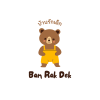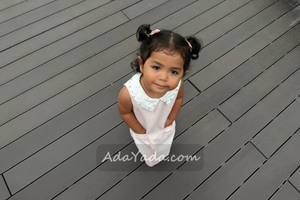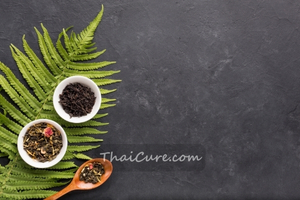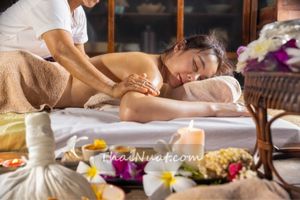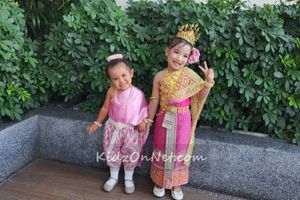- Introduction — Why Creative Play Is a Big Deal
- What Are Open-Ended Toys?
- Why Open-Ended Play Matters in Early Childhood Education
- Cognitive and Emotional Benefits You Can See
- Advantages of Open-Ended Play for Preschoolers
- Open-Ended Toys vs. Structured Learning Toys (STEM, Puzzles & More)
- Choosing the Right Open-Ended Toys for Each Age
- Bringing Open-Ended Play into Homes and Classrooms
- Culturally Responsive Play—Rooted in Home and Community
- Rotation, Storage, and Setup—Small Changes, Big Payoffs
- A Week of Open-Ended Invitations (Age-Friendly Examples)
- Common Myths—and Gentle Reframes
- A Day in the Life: One Setup, Many Stories
- Simple Assessment That Respects Play
- Conclusion — Raising Creative, Confident Learners
- FAQs for Families and Educators
- Do I need to buy special toys?
- How do I keep play from getting chaotic?
- What if children just make a mess?
- What are the main benefits of open-ended toys in early childhood education?
- How do open-ended toys support cognitive development?
- What are the advantages of open-ended play for preschoolers at home and school?
- Are Montessori toys the same as open-ended toys?
- How can parents encourage open-ended play daily?
Introduction — Why Creative Play Is a Big Deal
If you’ve watched a toddler turn a scarf into a superhero cape, a blanket into a boat, or a cardboard box into a busy shop, you’ve seen the magic of imaginative play. In early childhood programs and homes alike, educators and families are rediscovering the benefits of open-ended toys in early childhood education: they invite curiosity, spark storytelling, and help children practice the skills they’ll use for life. Just as importantly, the advantages of open-ended play for preschoolers include social growth, language development, and the kind of creative confidence that carries into the primary years.
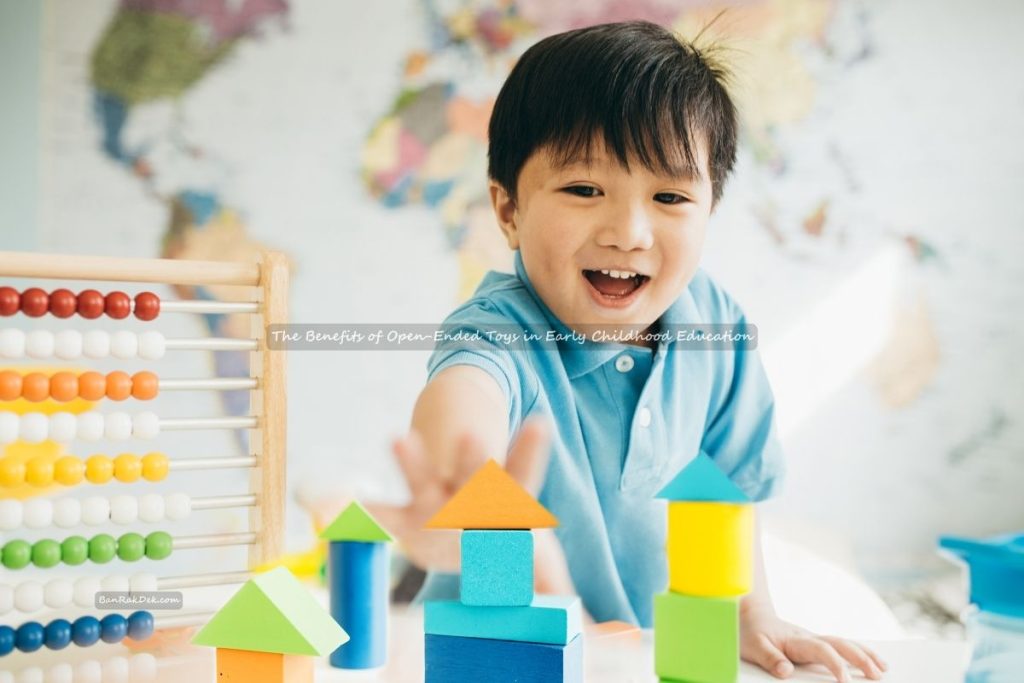
Open-ended toys don’t tell children what to do; they whisper, “What can you imagine?” That simple shift—from right answer to many possible paths—changes how kids approach problems. It builds creative confidence, helps them regulate emotions through pretend scenarios, and creates room for collaboration. Whether you’re a parent setting up a corner at home or a teacher designing a playful learning environment, you’ll find realistic, culturally respectful ideas here to make child-led play easier, richer, and genuinely joyful.
👉 “Looking to find the perfect toy for your baby’s stage? Read our guide on How to Choose Age-Appropriate Toys for Infants.”
What Are Open-Ended Toys?
Open-ended toys are materials children can use in many different ways. Think building blocks, loose parts (shells, rings, fabric scraps), art supplies, dolls and figurines, play silks, clay, magnetic tiles, cardboard tubes, or recycled containers. None of these come with a single “correct” outcome; instead, they encourage free play, exploratory play, and imaginative play. By contrast, closed-ended toys (like a puzzle that only fits one way or an electronic toy with scripted interactions) lead children to a pre-set endpoint. Both have value, but they support different habits of mind.
Because they offer multiple possibilities, open-ended toys support play-based learning and child-led play across cultures and settings. In Montessori and Reggio-inspired environments, you’ll see baskets of open-ended materials where children are trusted to combine, sort, stack, and pretend. That freedom nurtures independent play, early problem solving, and creative thinking—without turning playtime into a test. And since these materials are often simple and durable, families can create meaningful play setups without buying a mountain of gadgets.
Examples by function
- Build & design: wooden blocks, unit blocks, magnetic tiles, interlocking planks
- Dramatic play: dolls and animals, kitchen tools, fabric and costumes
- Art & making: clay, crayons, cardboard, tape, safe scissors, natural loose parts
- Sensory & outdoors: sand, water tubs, scoops, seed pods, shells, leaves, mud kitchen tools
Why Open-Ended Play Matters in Early Childhood Education
In the early years, young children learn through doing. When a child stacks blocks, narrates a story with figurines, or invents a shop with cardboard and tape, they are practicing the building blocks of literacy, math, and social-emotional learning. The proven benefits of open-ended toys in early childhood education include deeper engagement, longer attention spans, and meaningful language practice. Children plan (“I’m making a bridge”), test (“Will this stand?”), revise (“It fell; I’ll try a wider base”), and explain their choices to peers.
Open-ended play also promotes hands-on learning. Instead of passively receiving information, children manipulate real materials and experience cause and effect. The back-and-forth of cooperative play—“You be the shopkeeper; I’ll be the customer”—supports social skills, turn-taking, and conflict resolution. Because there isn’t a single right answer, children feel safe taking risks, which strengthens resilience and a “try again” mindset.
👉 “Want to inspire endless pretend play? Explore Top 10 Imaginative Toys That Boost Toddler Creativity.”
Cognitive and Emotional Benefits You Can See
Open-ended materials give children chances to practice critical thinking, decision making, and problem solving. When toddlers experiment with ramps, gravity, and balance using planks and blocks, they’re building early STEM understanding while telling stories about cars, animals, or tiny people. As they adjust, test, and rebuild, children rehearse the same mental moves that later help with reading comprehension and math reasoning. These everyday moments demonstrate the very real benefits of open-ended toys in early childhood education.
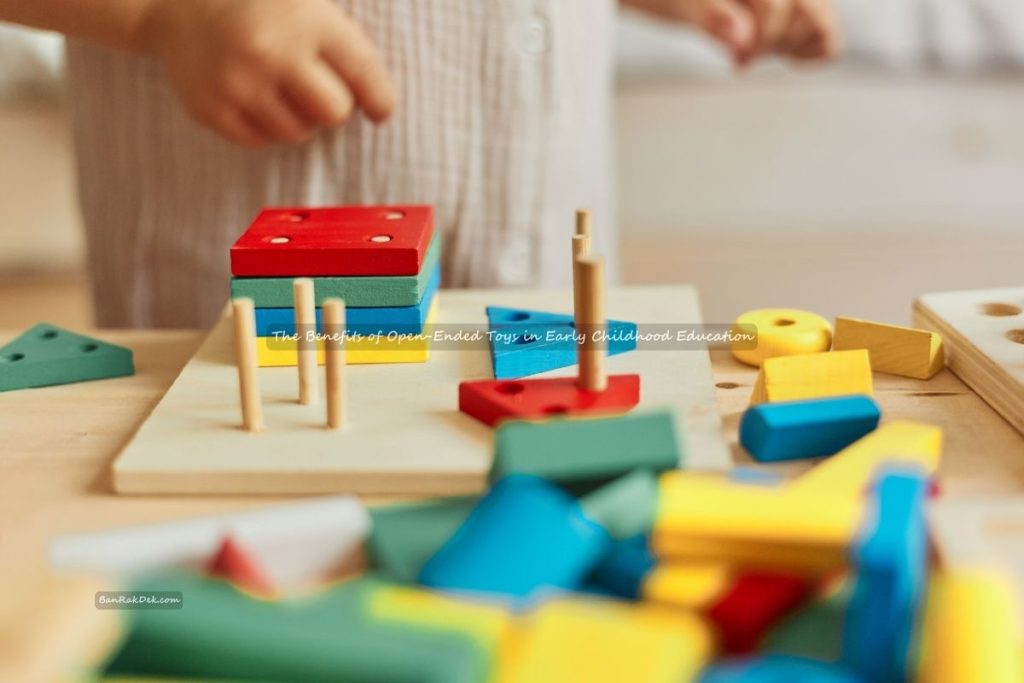
Emotionally, pretend scenarios help children process big feelings in a low-stakes way. A child might act out a doctor visit with a stuffed animal, negotiate roles with a peer, or create a “safe house” with blankets when the world feels noisy. Through this imaginative play, children develop emotional regulation and language for feelings. For many families, these are the quiet but powerful advantages of open-ended play for preschoolers: a calmer child who can share, wait, and ask for help.
Open-ended play invites independent play cycles that lengthen over time. After a short setup—placing fabrics, blocks, and figures within reach—adults can step back. Children begin to direct their own projects, make choices, and evaluate outcomes. That autonomy nurtures a sense of competence: “I can do hard things.” It’s one more reason families and teachers value the benefits of open-ended toys in early childhood education.
Advantages of Open-Ended Play for Preschoolers
Preschool is a golden window for language, imagination, and social learning. The specific advantages of open-ended play for preschoolers show up in several domains:
Language & Storytelling
Open-ended toys prompt narration—who, what, where, and why. Children give voices to characters, describe actions, and retell favorite stories. This playful rehearsal improves vocabulary, sentence structure, and comprehension. When adults join as respectful partners—listening, asking open questions, adding a new prop—language flourishes.
Social Skills & Collaboration
Because open-ended materials can be shared and combined, children practice cooperative play, peer interaction, and simple negotiation: “You build the road; I’ll build the garage.” They learn to compromise, trade, and explain their ideas—skills that tower over what any talking toy can do.
Creativity & Flexible Thinking
With no single outcome, children can try five different designs for a bridge or invent kitchen tools from sticks and cups. These experiments strengthen creative thinking, planning, and persistence. Across classrooms, educators notice that the benefits of open-ended toys in early childhood education include a culture of “What else could we try?”
Self-Regulation & Confidence
Dramatic play allows children to step into roles—to be the parent, the baker, or the superhero. Trying on those identities promotes self-regulation and empathy. As successes add up, so does a child’s belief in their abilities. These are everyday, observable advantages of open-ended play for preschoolers.
Open-Ended Toys vs. Structured Learning Toys (STEM, Puzzles & More)
Open-ended and structured toys are not rivals; they’re partners. Puzzles, shape sorters, and many STEM sets are excellent for goal-oriented practice and step-by-step reasoning. Open-ended materials, on the other hand, are superb for divergent thinking—many paths, many answers. A healthy play diet includes both. In fact, one of the practical benefits of open-ended toys in early childhood education is how naturally they blend with structured challenges: a child might build a city with blocks (open-ended) and then measure roads, sort shapes, or test weight (structured).
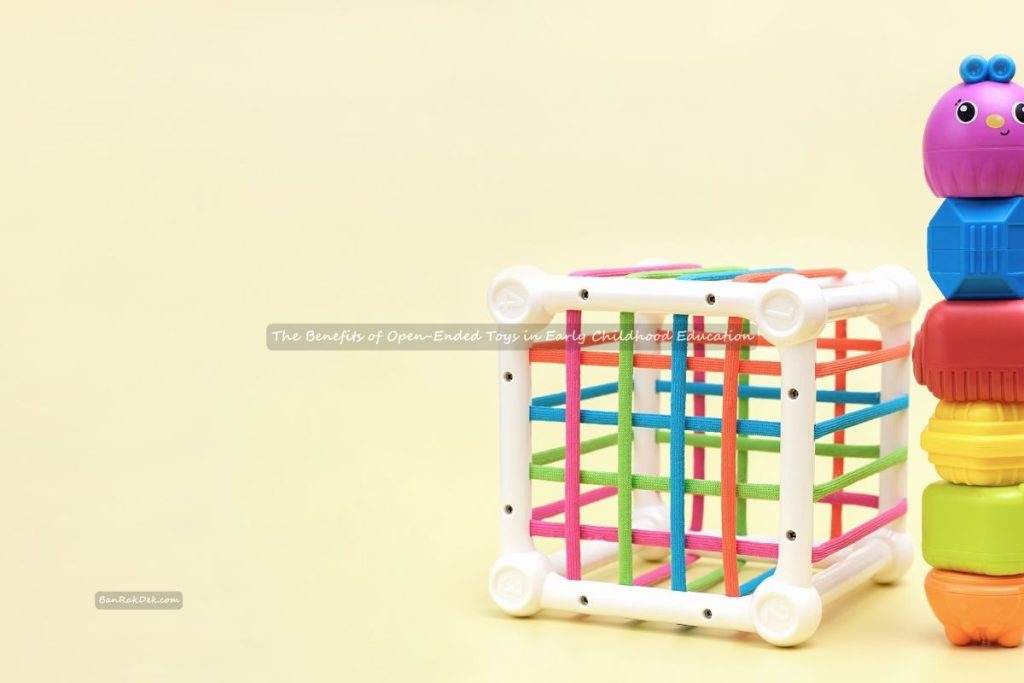
When families ask which to choose, the answer is “some of each.” Offer a few closed-ended tasks for focus and clear feedback, then plenty of open-ended time for expansion. The mix helps children transfer skills from one context to another, building both accuracy and imagination.
Choosing the Right Open-Ended Toys for Each Age
You don’t need a huge budget to build a meaningful collection. Start simple and consider safety, durability, and cultural relevance. Use baskets or low shelves to display materials so children can find, carry, and put away their favorites. Here are age-friendly ideas that honor different home cultures and traditions:
Infants (0–12 months)
- Soft scarves, textured cloths, large rings, lightweight rattles
- A small mirror, safe wooden teethers, crinkle books
- Caregiver games like peekaboo with fabric and gentle sensory play
Toddlers (1–3 years)
- Sturdy blocks, nesting cups, stacking rings, large magnetic tiles
- Dolls with simple features, play food, pots and spoons, chunky crayons
- Large cardboard boxes to crawl in, decorate, and convert into forts
Preschoolers (3–5 years)
- Unit blocks and planks, figurines, trains and tracks, play silks
- Clay and simple tools, tape dispensers, recycled inventing box
- Outdoor loose parts play: sticks, stones, seed pods, scoops, sand and water
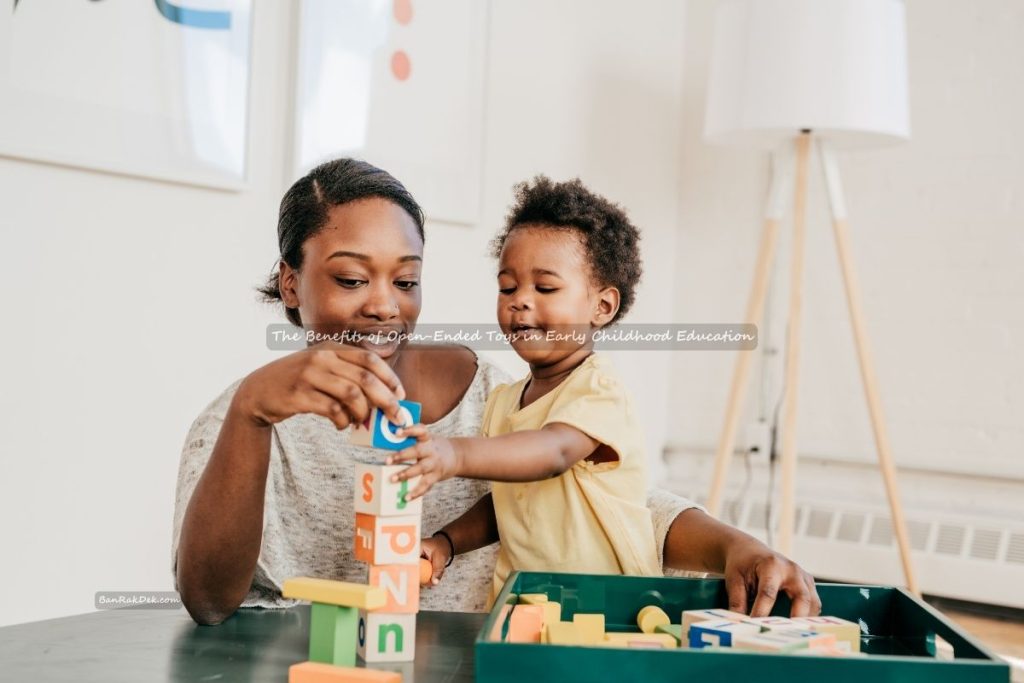
Across ages, choose eco-friendly toys and safe materials—unfinished wood, cotton, stainless steel, silicone. Durable, repairable items respect the planet and family budgets. For many caregivers, this is where the practical advantages of open-ended play for preschoolers meet everyday life: fewer toys doing more work.
As you curate, remember the guiding purpose: the lived benefits of open-ended toys in early childhood education—a playful environment where children feel free to explore, test, and invent.
Bringing Open-Ended Play into Homes and Classrooms
A little intentional setup goes a long way. Try these educator-tested strategies to build inviting, child-led spaces:
1) Create “yes” spaces
Use low shelves and open baskets so children can see and choose. Limit the number of items on display to reduce overwhelm. Rotate materials every week or two to keep interest high.
2) Offer time, not just things
Schedule generous blocks of free play. Real learning takes time: children plan, try, and revise. Protect that flow by minimizing interruptions when engagement is high.
3) Model wonder, not answers
Join play as a curious partner: “I notice your tower is leaning. What could help it stand?” Ask open questions, narrate what you see, and add a new element only if it supports the child’s idea.
4) Connect indoors and outdoors
Bring nature in (pinecones, leaves, seed pods) and take materials outside (fabric, blocks on a mat, water tubs). Outdoor exploratory play invites gross-motor building and big-energy storytelling.
5) Honor culture & language
Fill dramatic-play baskets with familiar items—rice scoops, woven baskets, family recipe pots, fabric from local markets, pretend foods from home cuisines. Invite children to name objects in their home languages and weave family stories into play.
6) Document learning
Snap photos, save a few drawings, and write down children’s quotes. Display them at child eye-level. This lightweight documentation helps families “see” the learning, and it reminds children of their ideas the next day.
7) Blend with structured learning
Pair open-ended builds with simple challenges: count blocks, compare lengths, sort lids by size or color, draw a “blueprint” of a favorite structure. This is one of the everyday benefits of open-ended toys in early childhood education—open-ended play becomes a bridge to early literacy and numeracy.
Culturally Responsive Play—Rooted in Home and Community
Open-ended play is most powerful when it reflects children’s real lives. In Thailand and across Southeast Asia, many families cook together, visit fresh markets, and gather for festivals. Bring those experiences into dramatic play: metal rice scoops, banana-leaf plates made from felt, woven baskets, and fabric in prints children recognize from home. A cardboard stall with play money becomes a night market; a basin, ladle, and cups become a som tam stand; a few scarves transform into temple sashes. When children see their daily world represented, they feel seen—and they have richer stories to tell.
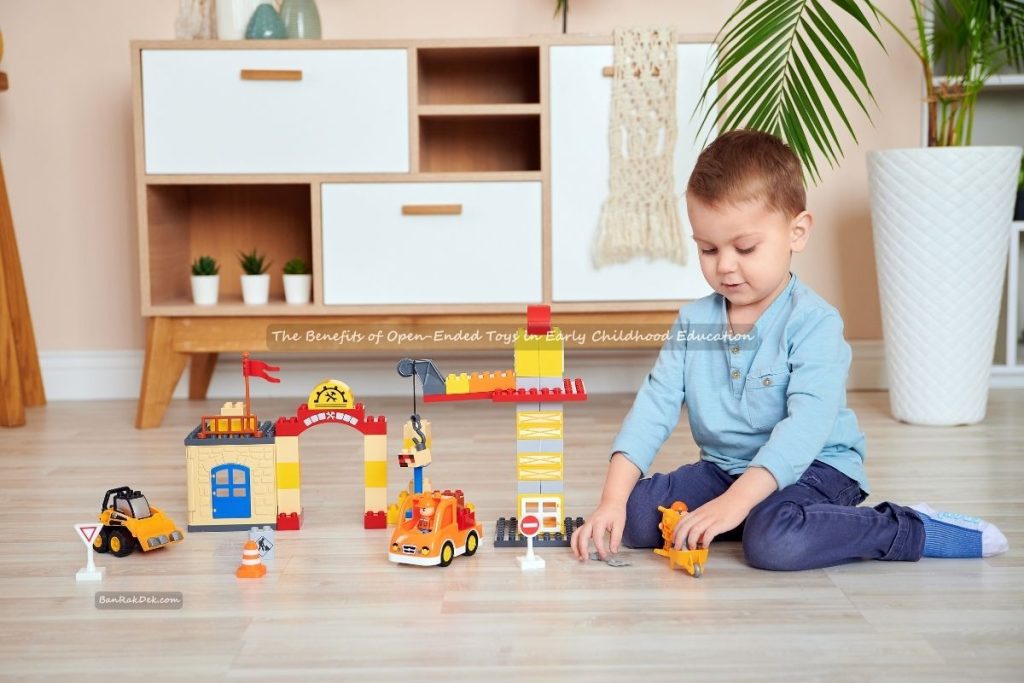
Culturally responsive materials also support multilingual development. Label baskets in the home language and in English; practice greetings or counting while cooking “noodles” or sorting herbs. Add menus with pictures so pre-readers can play shopkeeper. These strategies honor family wisdom while growing vocabulary, categorization, and early literacy without worksheets.
Finally, remember inclusion. Choose dolls and figures with a range of skin tones and abilities. Add play food that reflects Muslim, Buddhist, and vegetarian households. Avoid stereotypes by offering open-ended props (fabric, bowls, tools) rather than branded costumes. The goal is not to imitate culture perfectly but to invite children to bring themselves into play—curious, proud, and ready to learn.
Rotation, Storage, and Setup—Small Changes, Big Payoffs
A thoughtful setup amplifies unstructured play. Start by limiting what’s on display: 6–8 baskets is plenty for most rooms. Group items by function—blocks with planks, fabric with clips, animals with people. Use trays to “frame” invitations, such as a mirror with shells, or a basket of lids with a muffin tin for sorting. Clear pathways and child-height surfaces encourage building and dramatic play.
Plan a simple rotation. Each week, refresh one or two baskets: swap scarves for ribbons, add cardboard tubes to the block area, or move play food to the outdoor kitchen. Keep a small back-stock in a closet so changes feel new without expanding the total number of toys. A visible place for finished creations—a photo board, a low shelf—signals respect for children’s ideas and invites them to revisit and extend projects the next day.
Safety and sustainability matter. Check for choking hazards, splinters, loose magnets, and heavy items that might fall. Favor repairable, recyclable materials like wood, fabric, metal, and cardboard. When families share or borrow materials, attach a note with care instructions; this builds community and reduces waste while keeping budgets in check.
A Week of Open-Ended Invitations (Age-Friendly Examples)
Infants: A basket of fabric squares to scrunch and wave; a mirrored tray with rings to grasp; caregiver finger-plays with scarves and gentle peekaboo.
Toddlers: Cardboard boxes to crawl, decorate, and convert into buses; a scoop-and-pour station with cups; chunky crayons and tape for making tickets.
Preschoolers: Block city with fabric roads; small world tray with animals and pebbles; inventors’ box with cardboard, string, and safe scissors; simple water channel on a mat with funnels and containers.
Structure the day with long, protected periods for child-led exploration. Begin with a short group warm-up—song, story, or a photo of yesterday’s build—and then release children to choose. Midway, offer a soft prompt: “What could make your bridge stronger?” Close with reflection: children share what worked, what they changed, and what they want to try tomorrow. This rhythm builds stamina, language for learning, and pride in effort.
Common Myths—and Gentle Reframes
Myth 1: “Open-ended toys are just for fun; they’re not academic.”
Reframe: Play is the original research lab. Children hypothesize, test, revise, and explain. Those habits of mind are academic foundations.
Myth 2: “My child needs toys that teach letters and numbers.”
Reframe: Children learn symbols best when they have concrete experiences. Sorting lids, making menus, and telling shop stories lay the groundwork for reading, writing, and math.
Myth 3: “Our home is too small for this.”
Reframe: A single basket of blocks and fabric can power weeks of independent play. It’s the variety of uses—not the volume of toys—that matters most.
Myth 4: “Open-ended toys are expensive.”
Reframe: Many are free or low-cost: cardboard, tape, fabric, kitchen tools, natural loose parts. Think versatile, not flashy.
A Day in the Life: One Setup, Many Stories
Picture a low shelf with two baskets of blocks, a tray of fabric squares, a handful of recycled lids, some cardboard tubes, and three figurines. In the morning, a toddler stacks and knocks down towers, giggling at the sounds. Later, two preschoolers turn fabric into roads, line lids as stepping stones, and turn tubes into tunnels for a city. In the afternoon, a caregiver joins as a customer, and the city becomes a noodle stall with bowls, spoons, and pretend money. The materials didn’t change—only the stories did. That’s the quiet power of open-ended play.
Simple Assessment That Respects Play
Educators often ask how to “track” progress without interrupting play. Try these gentle tools:
- Learning stories: short narratives capturing a child’s idea, strategy, and next steps
- Photo panels: sequences that show planning, building, revising
- Language notes: snippets of vocabulary, questions, and peer conversation
- Skill lenses: observe through lenses like collaboration, problem solving, persistence, and creativity
These methods honor the child’s process and help adults plan invitations that extend thinking—without turning play into worksheets.
Conclusion — Raising Creative, Confident Learners
Open-ended materials might look simple, but their impact is profound. In homes and classrooms worldwide, families and teachers are seeing the real benefits of open-ended toys in early childhood education: richer language, stronger social skills, and deeper problem-solving habits. And the everyday advantages of open-ended play for preschoolers—confidence, independence, and joyful collaboration—are gifts that last far beyond the preschool years. By curating a few versatile materials, protecting time for play, and honoring children’s cultures and ideas, we nurture creative learners who are ready for the challenges—and wonders—of the world.
FAQs for Families and Educators
Do I need to buy special toys?
No. Many of the best materials are already in your home: boxes, cloth, pots, lids, paper tubes, cardboard, tape. Add a few sturdy blocks and some fabric and you have endless possibilities.
How do I keep play from getting chaotic?
Offer fewer choices, not more. Use small baskets, rotate materials regularly, and teach clean-up with photos on shelves so children know where things live. A calm environment supports focus and independent play.
What if children just make a mess?
Mess is often a sign of exploration. Set boundaries (a mat for water, aprons for clay) and model care for materials. Celebrate effort and ideas, not just outcomes; over time, children learn to start, extend, and finish their own projects.
What are the main benefits of open-ended toys in early childhood education?
Open-ended toys spark creativity, problem-solving, and imagination. They help children explore ideas freely, strengthen fine-motor skills, and build confidence through child-led play and discovery.
How do open-ended toys support cognitive development?
These toys encourage critical thinking and hands-on learning. Children plan, test, and modify their ideas—skills that later support literacy, math, and STEM learning.
What are the advantages of open-ended play for preschoolers at home and school?
Preschoolers use open-ended materials to invent stories, practice social skills, and express emotions. This unstructured play nurtures language development, cooperation, and empathy.
Are Montessori toys the same as open-ended toys?
Many Montessori toys are open-ended, but not all. Montessori materials invite repetition and focus, while open-ended items emphasize creative play, multiple uses, and exploratory learning.
How can parents encourage open-ended play daily?
Rotate a few versatile materials—blocks, fabrics, or recycled boxes—so children can combine and transform them. Give plenty of time for independent play and join as a curious partner rather than the director.
